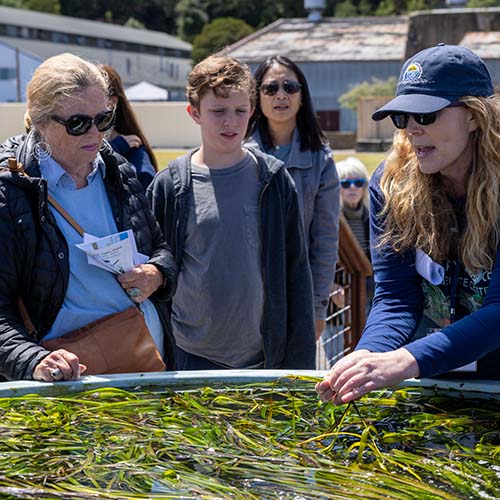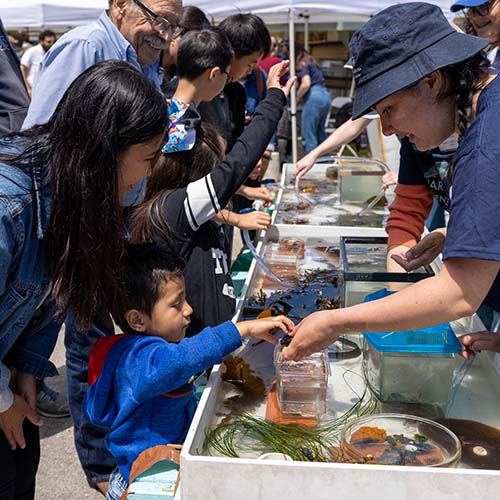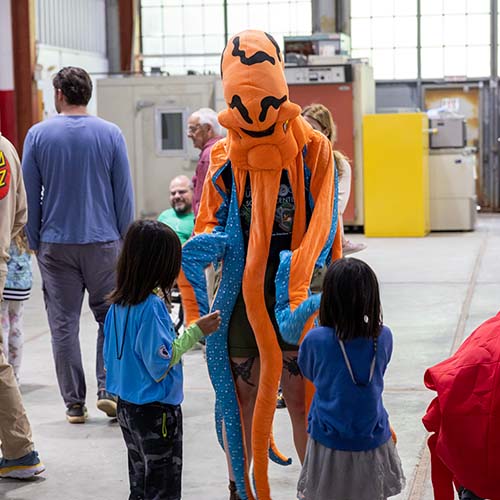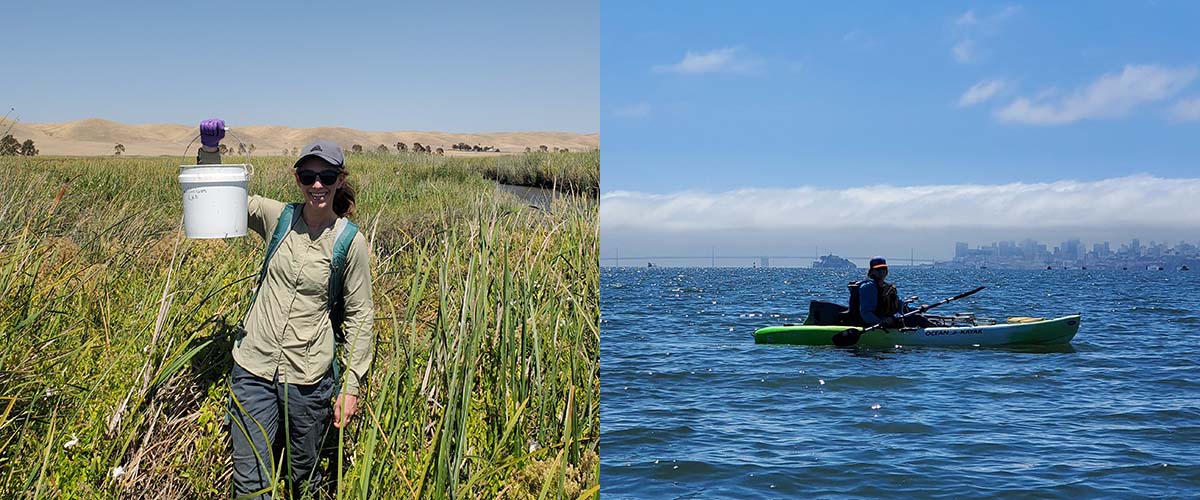SFSU’s Estuary & Ocean Science Center welcomes public to open house Oct. 13
Enjoy scenic views, sea critters, oysters and science at the center’s annual Marine Lab Open House
Across the Golden Gate Bridge in Tiburon is the only marine lab on the San Francisco Bay: San Francisco State University’s Estuary & Ocean Science (EOS) Center. This October, the center opens its doors to the public for its annual Marine Lab Open House to give the community an opportunity to learn about the San Francisco Bay, partake in family-friendly fun and enjoy gorgeous views — all for free.
“The Open House gives the EOS Center an opportunity to open our doors to the community and share our passion for marine and estuarine science and conservation,” said Katharyn Boyer, EOS Center interim executive director. “It is fun and fulfilling to share what we do with a swath of the public eager to learn.”
This year’s event is Sunday, Oct. 13, 11 a.m. – 3 p.m. at the EOS Center at the Romberg Tiburon Campus (3150 Paradise Drive Tiburon, CA 94920). Everyone (students, adults, children, scientists and non-scientists) is encouraged to come. Past events have attracted hundreds of attendees — the 2019 event drew over 1,000 attendees — and last year’s event was the first in-person event after a three-year hiatus.
“My favorite thing is seeing the curiosity and interest in children and adults who attend from all around the Bay Area — it gives me great hope,” Boyer said. “I love to be surprised by the questions that make me realize we have not told our science and conservation stories well enough or in quite the right way.”
But the EOS Center’s scientists are certainly trying, developing a variety of exhibits and immersive experiences about the ocean, marine life and solutions to environmental issues. Nearly 100 active marine lab scientists from the EOS Center and onsite partners like the Smithsonian Environmental Research Center and San Francisco Bay National Estuarine Research Reserve will greet visitors and answer questions.



Other partners will highlight the intersection between art and science. This year, the Tremology Lab — an arts and science collaborative — will showcase whale and dolphin sounds outdoors via a portable 16-channel immersive audio system. Tremology Lab projects have been exhibited at the National Geographic Society Museum, South by Southwest (SXSW) and more. SF State School of Design Lecturer Josie Iselin will also be on hand to teach visitors how to make their own algae cyanotypes. A “seaweed enthusiast,” Iselin has been a longtime EOS Center collaborator and has produced art and books about seaweeds and kelp.
“People learn in different ways and art can be an effective way to inspire curiosity. For example, when people see the beautiful and varied forms of seaweeds while using them to make sun prints, their interests might be sparked to learn more,” Boyer said. “We love to watch those sparks fly. This is what our Open House is all about.”
Register for the free Marine Lab Open House and learn more about the EOS Center
